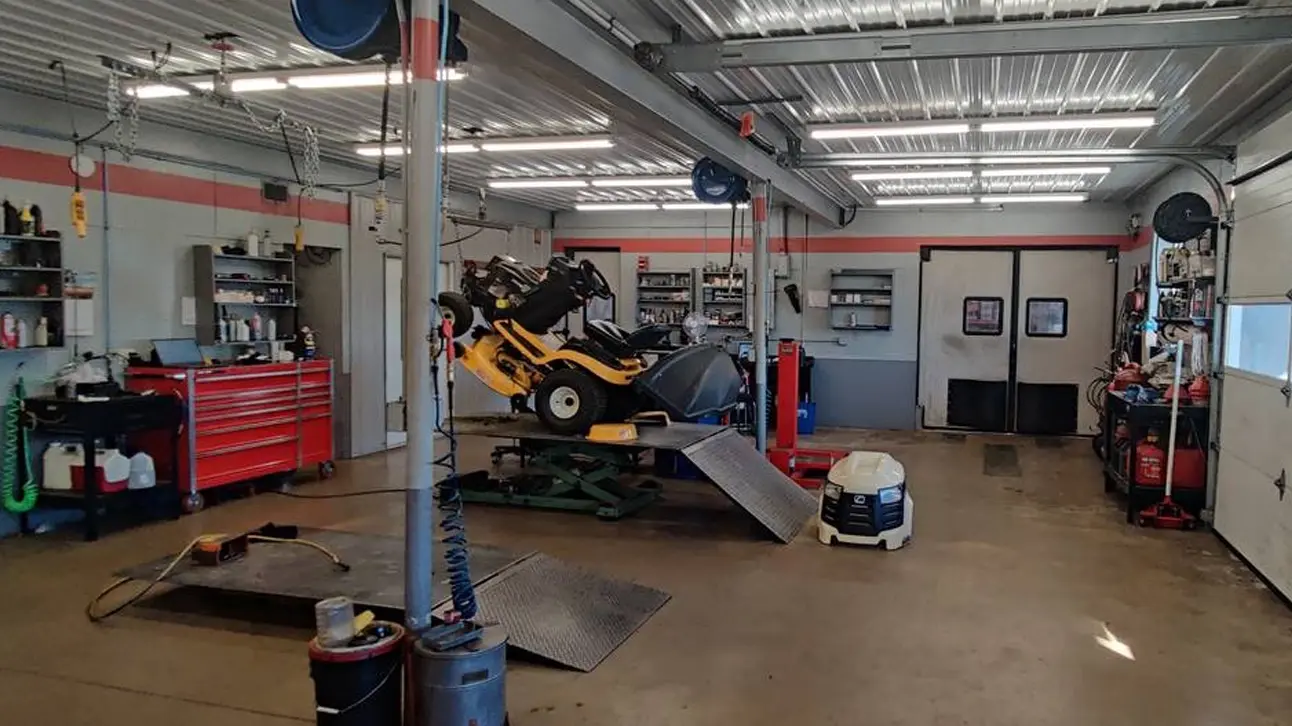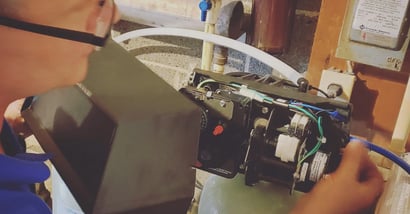You’ve decided it is time for perpetual inventory, and now you’re faced with the question: how do I value my inventory?
After all, inventory represents a lot of your money sitting on the shelf. You don’t want too much on hand at a time, so you buy it as you need it, often at different prices depending on tariffs, shortages, or other economic realities. You need to understand your costs to best set prices and think strategically about the future, but it gets complex quickly.
There are two primary methods for assigning dollar values to your inventory: First In First Out (FIFO) and Weighted Average Cost (WAC).
In this article we’ll cover:
- What is WAC?
- What is FIFO?
- Which method is best for inventory valuation?
- Why does this matter for you as a business owner?
What is Weighted Average Cost (WAC)?
It’s all in the name with this method. Since prices vary over time, this method lets you prioritize the average cost of an item. This smooths price fluctuations as you calculate your cost of goods sold (COGS).
Let’s put that into practice:
Imagine you are selling crop rollers. For the sake of this exercise, we’ll ignore the cost of using your machine and the labor that goes into each crop roller (which should be taken into account in an actual process). This crop roller will be made of 1500 lbs of steel, using two tires.
Recent steel purchases:
Purchase 1 = 3 tons = $2,882 ($0.48/lb)
Purchase 2 = 8 tons = $5,580 ($0.35/lb)
Purchase 3 = 5 tons = $3,188 ($0.32/lb)
Average steel cost = $0.36/lb
Recent tire purchases:
Purchase 1 = 10 tires = $950 ($95/tire)
Purchase 2 = 25 tires = $2,414 ($96.50/tire)
Average tire cost = $96.11/tire
Under the WAC method, your cost of goods sold for 1 crop roller will be $732.22.
1500 lbs steel + 2 tires = Crop Roller
1,500 * $0.36 = $540
2 * $96.11 = $192.22
540 + 192.22 = $732.22
If you sold 8 crop rollers, you would simply multiply that number by 8, for a total of $5,857.76.
Another key number to look at is your remaining inventory value. Under WAC, your remaining inventory value would be:
20,000lbs steel * $0.36 = $7,200
19 tires * $96.11 = $1,826.09
Total = $9,026.09
What is First In, First Out (FIFO)?
FIFO ignores averages and rather uses the specific price point at which you purchased the material or item to determine the cost. As the name suggests, this accounting method assumes you sell older inventory before you sell newer inventory and therefore uses the cost for the oldest items on the shelf to calculate your COGS. While this cost flow is an assumption, it tends to fit with reality in most cases; we typically want to see the oldest stock unit moved out first. (Keep in mind this system doesn’t require you to actually choose the oldest material, especially for those non-perishable items like tires – it doesn’t matter if you tend to grab the closest tire, not the oldest; as an accounting method it still holds.)
Let’s take the same example as above, again assuming you’ve sold 8 crop rollers.
Crop roller = 1500 lbs steel + 2 tires
8 crop rollers = 12,000 lbs of steel (6 tons) + 16 tires
Recent steel purchases:
Purchase 1 = 3 tons = $2,882 ($0.48/lb)
Purchase 2 = 8 tons = $5,580 ($0.35/lb)
Purchase 3 = 5 tons = $3,188 ($0.32/lb)
If 8 crop rollers use 12,000 lbs of steel, it will consume all the steel you purchased in Purchase 1 plus 3 tons or 6,000 lbs from Purchase 2.
And if 8 crop rollers use 16 tires, you will have consumed all of Purchase 1 and 6 tires from Purchase 2.
Steel Purchase 1 = 6,000 lbs = $2,882 (fully consumed)
Steel Purchase 2 = 6,000 lbs = $2,100
Total = $4,982
Tire Batch 1 = 10 tires = $950
Tire Batch 2 = 6 tires = $579.36
Total = $1,529.36
$4,982 (steel) + $1,529.36 (tires) = $6,511.36
With FIFO your COGS in this example is $6,511.36, a $653.60 difference from what it is under Weighted Average Cost.
Your remaining inventory value would be $8,534.64, about $500 less than it would be valued using WAC.
10,000 lbs (Steel Purchase 2) * $0.35 = $3,500
10,000 lbs (Steel Purchase 3) * $0.32 = $3,200
19 Tires (Batch 2) * $96.56 = $1,834.64
$3,500 + $3,200 + $1,834.64 = $8,534.64
So which one is better?
That somewhat depends on your definition of better. Does better mean “simpler?” ”More accurate?” Something else?
Both WAC and FIFO are acceptable accounting methods. Either way, you’ll be set up to file your taxes in compliance with IRS requirements, and your financial statements accurately report your results for the year, so it really comes down to what you’d prefer.
If you are looking for the simplest solution, WAC is a solid choice. The math involved with WAC (which I’m sure you read through in depth) is fairly basic. It’s not hard to calculate an average, and WAC smooths over price fluctuations easily. In a world where prices are going down (like above) it can seem more accurate. Yet that is rarely the world we live in.
With a strong system to run the necessary equations for you, FIFO is the clear winner. After all, an accounting method is supposed to give you the most accurate depiction of what has happened in the past, and what you still own. Where FIFO gives you costs based on what you actually paid, WAC often muffles some important noise that can actually help you better understand your place in the market, the real costs behind your inventory, and help you plan for the future. It ensures that your COGS and remaining inventory value on hand are both true to your reality, giving you a firmer foundation for pricing and planning for the future.
Why does this matter for you, the business owner?
Because FIFO is the better method for determining your replacement costs.
Perhaps you are the rare business owner who enjoys diving into accounting principles. More likely, you view this as a necessary evil. You may have even skipped the entire article above to just read this section.
Too many discussions about FIFO and WAC are only past-focused; they revolve around COGS and the “how-tos” of the method. As a business owner, you are less concerned with the past – it matters, of course, insofar as it affects the decisions of the future. Your goal is to understand your economic reality – both by analyzing past cost trends and having an accurate picture of the cost tied up in your inventory on hand.
Weighted average can show you your average costs, but it gives you less specific insight into cost trends over time, given it doesn’t allow you to trace costs back directly to the batch purchased. Weighted average therefore tends to give you a less accurate picture of what your inventory asset value truly is – if you were to liquidate your inventory, you would most likely sell at your most recent purchase cost not at a weighted average purchase cost. Only FIFO helps you as a business owner stay closer to your economic reality because it gives you a snapshot of what is happening today, and that is usually closer to what is going to happen tomorrow than the average of the past.
With this approach you’ll have a much fuller picture of pricing changes and fluctuations. Looking at your trends, you can be better prepared to predict the cost of replacement for your goods sold tomorrow, allowing you to be more proactive about your pricing to customers and your inventory purchasing. It helps you look at what is left in your shop and see what the cost is going to be to replace those items when they are sent out the door to a customer.


As both CEO of Koble and a CPA, Mike has spent his career helping businesses thrive by building out strong operations and financials. When not at Koble, you can find Mike reading spy novels, acting like a kid with his kids, engaged in church activities, or planting trees.






